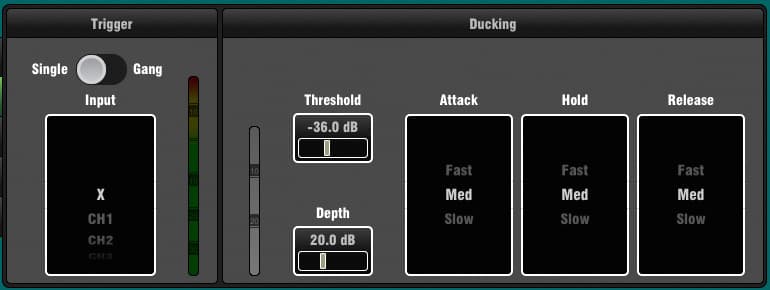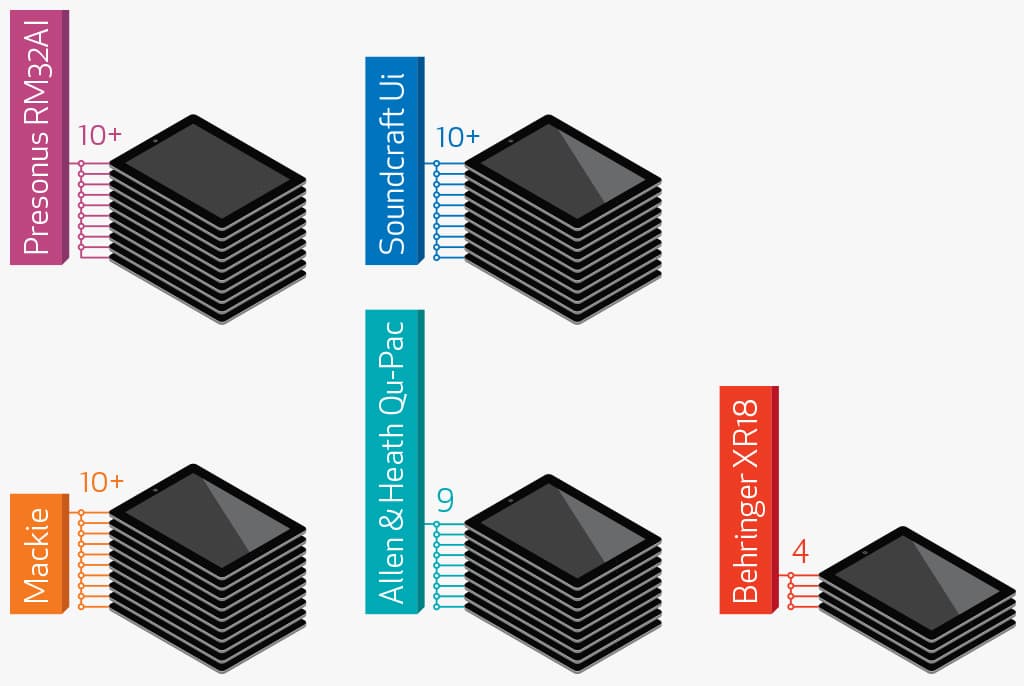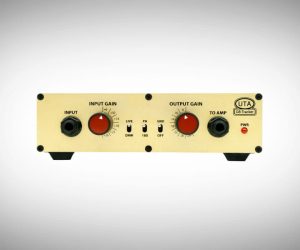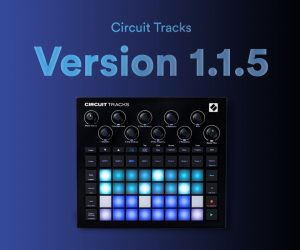
Rack ‘Em Up, Part 8: Unique Features
iPads may be on the downward trend, but iPad-controlled mixers are coming out in droves. We round up everything currently out on the market for one giant rack mixer review.

UNIQUE FEATURES
With all these units, the headphone output is useful if you’re standing next to your rack. But if you’re mixing away from your I/O and want a little PFL in your ears, that’s a problem. Behringer’s solved it with the built-in Ultranet P16 personal monitoring port, you can buy an additional Powerplay unit and get full control over your monitoring via Ethernet.
The real coup of the XR18 is the impending inclusion of Dan Dugan auto-mixing. It’s the cure for diminishing gain-before-feedback in multiple lapel situations. Previously the preserve of cashed up productions, it’s popped up as an additional feature on a number of large digital consoles. So to see it incorporated into a mixer at this price point is unique. That said, it’s coming in a future firmware update, so whether you bank on that promise or not, is up to you.
Another unique feature is the ability to co-opt any of the four stereo effects engines as inserts, even splitting stereo engines into two mono inserts — though both have to be the same effect.
While, Soundcraft hasn’t quite licked the headphone dilemma, it’s at least acknowledged the issue, allowing both headphone outputs to be switched to a pair of extra line level, mono aux outputs.
Its device-agnostic application, and the ability to drive all wireless/wired connection points at once is definitely unique. But inside, there are two other main processing differences. Firstly, there’s dbx AFS2 (Advanced Feedback Suppression) on each output, including on the headphone outputs when switched to an aux. It works amazingly well and useful for installs with ceiling speakers and a roaming mic. You can set it to one of two modes: Fixed or Live. Fixed is a pre-performance setup which allows you to ring out the system for maximum headroom, while the Live mode updates the filter placement on the fly, and is quite smart about where it needs to be, even getting out of the way when not required. You can also use both, Fixed during setup, then switch it to Live as a failsafe to add filters automatically during the show.

The other noticeable addition is Digitech amp modelling on the first two Hi-Z inputs. You can select from a variety of amp and cabinet models, and tweak the dynamics, effects sends, and EQ settings from the amp page. I found some models more usable than others, and the modelled noise a little too much for my liking on occasion. But like any amp modeller, its about finding the sound that suits you. A really handy addition for guitarists that can be changed per snapshot, and even triggered via the footswitch input. And if you go up to the Ui16, you’ve also got an HDMI connector for external meter displays.
I’ve covered the built-in screen, so the D-Snake expansion option is next in line for unique features on the Allen & Heath. It allows expansion of the Qu-Pac to 32 channels, spacing out your I/O. The screen comes into full effect in the Qu-Control section. Here, installers can set up one or more tabs of pages with limited controls on them. For instance, you might want to have just a Background Music control, or a specific Matrix level control that corresponds to a certain zone. Anything can be assigned to these little windows. All the user needs to do is touch the onscreen button and twist the rotary encoder. The other apps can approximate it by setting up custom locked-out fader screens, but the beauty of this method is, there’s no learning curve for the user — just touch and twist.

There’s also a ducker (as there is on the Behringer) where the trigger can either duck a single channel or multiple channels in a gang all assigned to the same trigger. The ducker also has controls for attack, release and hold with fairly simple fast, medium, slow settings for each. You can also apply the ducker to any of the four stereo groups. The Qu-Pac also has a signal generator you can send to any output, though it doesn’t appear on the app. And Allen & Heath is the only other player with the headphone issue licked. Just hook up one of its ME-1 systems.
The RM series’ edge is in Presonus’ bigger-picture ecosystem. The StudioLive CS18AI is an AVB-driven console controller add-on for the RM series mixers. If you see yourself expanding to a full-blown, physical faders ’n’ all setup, then the Presonus is the way to go.
Allen & Heath has abandoned any external control possibilities, you can set up a controller for mutes, pans and fades via MIDI on the Behringer, and there’s something similar in beta on the Soundcraft UI, via its USB ports. Both are handy for keyboardists being able to manipulate levels on their onboard faders, and I’m sure we’ll see an expansion of the MIDI control side in the future. But for now, Presonus’ CS18AI option is by far the biggest jump from mobile rack mixer to full 32-channel digital console system.
Update: Presonus tells us that a February firmware update (in public beta) allows you to hook up any two of the Presonus RM varieties for 32 (2 X 16), 48 and 64-channel setups. The hookup is via AVB, and runs natively as one system inside all Presonus’ apps (including phones) and on the CS18AI control surface. It means you can start small with the RM system, and upgrade as required.
It’s the small things too, and the RM has locking XLR input connectors to keep things snug, it also has signal present/clip LEDs for each channel on the unit. Nice touches.
Mackie has a Dante expansion option card for the DL32R. It has two Dante ports for looped redundancy alongside the Ethernet port for wireless router setup. You can easily route any channel to the Dante outputs via the app’s matrix. It means your I/O isn’t limited to the Mackie network, and opens up loads of different install and recording applications.
















RESPONSES